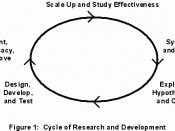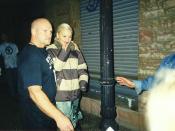Final Assessment
Question 1
Carey Manufacturing, Inc., is considering reorganizing its plant into manufacturing cells. The following estimates have been prepared to evaluate the benefits from the reorganization:
Before the change | After the change | |
Total annual sales | $ 700,000 | $850,000 |
Costs as percentage of sales: | ||
Direct materials | 10% | 9% |
Direct labor | 6% | 4% |
Support costs | 9% | 7% |
Work-in -process inventory | $200,000 | $120,000 |
Inventory carrying costs are estimated to be 12% per year.
Required:
Why do the layout reorganization estimates include
from carrying reduced levels of work-in-process inventory?
a decrease in direct material costs as a percentage of sales?
an increase in sales?
As a result of the layout reorganization, what amount of annul change is projected
form carrying reduced levels of work-in-process inventory?
for incremental manufacturing costs?
in total benefits?
Answer:
a.
1. Layout reorganization estimates include a decrease in work-in-process inventory because cellular manufacturing streamlines production flows. When products flow immediately from one processing stage to the next, there is less build-up of work-in-process inventories.
Question 2
Identify and explain each of the three major cycles of the total-life-cycle-costing approach
How does the total-life-cycle costing approach differ from traditional product-costing? Explain.
Answer
Research, Development, and engineering cycle: target costing and value engineering Manufacturing cycle: activity-based costing, Kaizen costing post-sale service and disposal cycle
Each part of value chain is managed by different organizational function it integrates the trade-offs and performance over time and functional units
Q2a
The three major cycles of the total-life cycle costing approach are: research, development, and engineering (RD&E); manufacturing; and post-sale service and disposal.
The research, development, and engineering cycle has three stages: 1. Using market research to assess emerging customer needs that leads to idea generation for new products;
2. Products design prototypes, production processes, and any special tooling required.
The manufacturing cycle begins...


